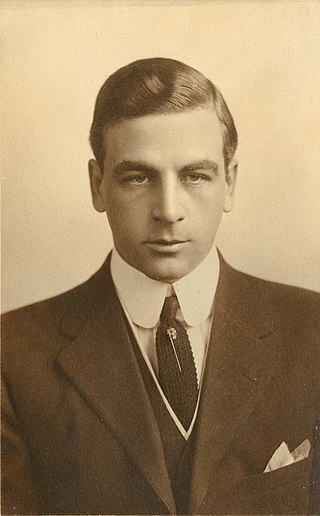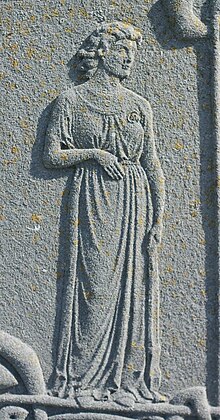This article contains information about the literary events and publications of 1913.

Sir Thomas Henry Hall Caine, usually known as Hall Caine, was a British novelist, dramatist, short story writer, poet and critic of the late 19th and early 20th century. Caine's popularity during his lifetime was unprecedented. He wrote 15 novels on subjects of adultery, divorce, domestic violence, illegitimacy, infanticide, religious bigotry and women's rights, became an international literary celebrity, and sold a total of ten million books. Caine was the most highly paid novelist of his day. The Eternal City is the first novel to have sold over a million copies worldwide. In addition to his books, Caine is the author of more than a dozen plays and was one of the most commercially successful dramatists of his time; many were West End and Broadway productions. Caine adapted seven of his novels for the stage. He collaborated with leading actors and managers, including Wilson Barrett, Viola Allen, Herbert Beerbohm Tree, Louis Napoleon Parker, Mrs Patrick Campbell, George Alexander, and Arthur Collins. Most of Caine's novels were adapted into silent black and white films. A. E. Coleby's 1923 18,454 feet, nineteen-reel film The Prodigal Son became the longest commercially made British film. Alfred Hitchcock's 1929 film The Manxman, is Hitchcock's last silent film.

Milton George Gustavus Sills was an American stage and film actor of the early twentieth century.
This is a list of bestselling novels in the United States in the 1910s, as determined by The Bookman, a New York–based literary journal (1910–1912) and Publishers Weekly. The list features the most popular novels of each year from 1910 through 1919.

SS (RMS) Ellan Vannin was built as an iron paddle steamer in 1860 at Meadowside, Glasgow for the Isle of Man Steam Packet Company. She was originally named Mona's Isle - the second ship in the company's history to be so named. She served for 23 years under that name before being rebuilt, re-engined and renamed in 1883. As Ellan Vannin she served for a further 26 years before being lost in a storm on 3 December 1909 in Liverpool Bay.

Fritzi Brunette was an American actress.
The Prayer of Solomon is a prayer by King Solomon described in 1 Kings 8:22-53 and 2 Chronicles 6:12-42. This prayer is said to have occurred at the dedication of the temple of Solomon, which also became known as the First Temple. The wording and thinking of the prayer have much in common with the language of Deuteronomy.
Alexander Gooch and Alice Driver were natives of the area around Woodbridge, Suffolk, England, who were arrested, put to an inquisition and burned at the stake in Ipswich for their adherence to the protestant faith, as part of the Marian persecutions. Both are commemorated among the Ipswich Martyrs.

Winter Amos Hall was a New Zealand actor of the silent era who later appeared in sound films. He performed in more than 120 films between 1916 and 1938. Prior to that, he had a career as a stage actor in Australia and the United States. In sound films, he was frequently typecast as a clergyman.

The Manxman is a novel by Hall Caine, first appearing as a serial in The Queen, The Lady's Newspaper and Court Chronicle between January and July 1894. Published as one volume in August 1894 by Heinemann, The Manxman ended the system of three-volume novels. A highly popular novel of its period, it was set in the Isle of Man and concerned a romantic triangle. The novel has as its central themes, the mounting consequences of sin and the saving grace of simple human goodness.
Sylvia McNeill is a British pop and rock singer and songwriter.

The Master of Man: The Story of a Sin was a best-selling 1921 novel by Hall Caine. The fictional story is set on the Isle of Man and is concerned with Victor Stowell, the Deemster's son, who commits a romantic indiscretion and then gives up on all of his principles in order to keep it a secret. However, in the face of the mounting consequences, Victor confesses publicly to his crime and is punished, but redemption comes through a woman's love. The penultimate of Caine's novels, it is romantic and moralistic, returning to his regular themes of sin, justice and atonement, whilst also addressing "the woman question." It was adapted for a film entitled Name the Man in 1924 by Victor Sjöström.

The Woman of Knockaloe: A Parable is a melodramatic novel by Hall Caine first published in 1923. Set on the Isle of Man during the First World War, a young woman finds herself drawn to one of the nearby German internees. They begin a romance in the face of the fierce hostility of the local community which eventually drives them to commit suicide. The story has been described as a "minor masterpiece".

The Deemster is a novel by Hall Caine published in 1887, considered to be the first 'Manx novel'. It was Caine's third novel, the second to be set in the Isle of Man and it was his first great success. The plot revolves around the reckless actions of Dan Mylrea and the exile and atonement that follow.

The Bondman is an 1890 best-selling novel by Hall Caine set in the Isle of Man and Iceland. It was the first novel to be released by the newly established Heinemann publishing company. It was a phenomenal success and was later adapted into a successful play and two silent films.
She's All The World To Me is a short early novel by Hall Caine published in 1885 by Harper & Brothers. The novel was the first of Caine's works to be set on the Isle of Man and it centered on themes that would become integral to his later novels: a love triangle, secret mounting sins and eventual redemption. It was published only in America due to copyright problems, but Caine was subsequently able to reuse a great deal of its material in later novels, notably in The Deemster.

The Woman Thou Gavest Me is a 1919 silent film directed by Hugh Ford and starring Jack Holt, Katherine MacDonald and Milton Sills. It was produced by Famous Players–Lasky and distributed through Famous Players–Lasky and Paramount Pictures. The film is based on the 1913 controversial novel The Woman Thou Gavest Me by Hall Caine, adapted for the screen by Beulah Marie Dix. A song of the same name with words and music by Al Piantadosi promoted the film.

Noli me tangere, also known as Christ Appearing to Mary Magdalene in the Garden, is a c. 1525 painting by Correggio which depicts the noli me tangere interaction between Jesus and Mary Magdalene shortly after the Resurrection. It is currently in the collection of the Museo del Prado in Madrid.

Laura Troubridge, Lady Troubridge, was a British novelist and etiquette writer. She wrote almost 60 novels and many short stories.
The Woman Thou Gavest Me may refer to:




















